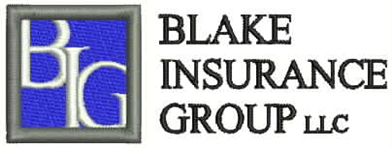Auto Insurance Agent

As an independent auto insurance agent with Blake Insurance Group, I understand the importance of having the right auto insurance coverage to protect you and your loved ones on the road. With so many options available, navigating the world of auto insurance can be overwhelming, especially when you’re trying to find the best policy for your specific needs and budget.
As a local auto insurance agent serving clients in Arizona, Alabama, Florida, Georgia, New Mexico, New York, North Carolina, Oklahoma, Ohio, Texas, and Virginia, I’ve seen firsthand how auto insurance requirements and regulations can vary significantly from state to state. That’s why it’s crucial to work with an agent who not only has a deep understanding of the insurance industry but also knows the unique needs and challenges of your community.
In this article, we’ll delve into the world of auto insurance, exploring the different types of coverage, the benefits of working with an independent agent, and the specific requirements and regulations for each of the states we serve. Whether you’re a seasoned driver or just getting behind the wheel for the first time, our goal is to provide you with the knowledge and tools you need to make informed decisions about your auto insurance and ensure you’re protected on the road.
State-Specific Minimum Coverage Requirements
Each state has its own set of minimum coverage requirements for auto insurance, which drivers must adhere to to be legally compliant. Understanding these requirements is crucial to avoid penalties, fines, or potential legal issues. Here, we’ll provide an overview of the minimum coverage requirements for some states we serve at Blake Insurance Group.
Arizona
In Arizona, the minimum liability coverage requirements are:
– $25,000 for bodily injury per person
– $50,000 for bodily injury per accident
– $15,000 for property damage.
START FREE ONLINE QUOTE NOW
At Blake Insurance Group, we respect your privacy. Your personal information is used solely for quote purposes and is not shared or sold

OUR EMAIL
 Alabama
Alabama
Alabama’s minimum liability coverage requirements are:
– $25,000 for bodily injury per person
– $50,000 for bodily injury per accident
– $25,000 for property damage
Meeting these requirements protects you from out-of-pocket expenses and legal troubles in case of an accident.
Florida
Florida operates under a no-fault insurance system, requiring:
– $10,000 for personal injury protection (PIP)
– $10,000 for property damage liability (PDL)
PIP covers your medical expenses regardless of who is at fault, while PDL covers damage to the other party’s property.
Georgia
In Georgia, the minimum liability coverage is:
– $25,000 for bodily injury per person
– $50,000 for bodily injury per accident
– $25,000 for property damage
These limits are in place to ensure drivers can cover costs associated with injuries and damages in an accident.
New Mexico
New Mexico requires drivers to have:
– $25,000 for bodily injury per person
– $50,000 for bodily injury per accident
– $10,000 for property damage
Adequate coverage helps protect your financial assets and keeps you compliant with state laws.
New York
New York’s minimum coverage requirements include:
– $25,000 for bodily injury per person
– $50,000 for bodily injury per accident
– $10,000 for property damage
– $50,000 for personal injury protection (PIP)
– $25,000/$50,000 for uninsured motorist coverage
New York’s requirements are more comprehensive, offering additional protection through PIP and uninsured motorist coverage.
North Carolina mandates the following minimum liability coverage:
– $30,000 for bodily injury per person
– $60,000 for bodily injury per accident
– $25,000 for property damage
These limits provide a higher level of protection compared to some other states.
Oklahoma
Oklahoma’s minimum liability coverage requirements are:
– $25,000 for bodily injury per person
– $50,000 for bodily injury per accident
– $25,000 for property damage
Ensuring you meet these requirements is essential for legal driving in Oklahoma.
Ohio
Ohio requires drivers to have:
– $25,000 for bodily injury per person
– $50,000 for bodily injury per accident
– $25,000 for property damage
This coverage helps safeguard against financial losses due to accidents.
Texas
In Texas, the minimum liability coverage is:
– $30,000 for bodily injury per person
– $60,000 for bodily injury per accident
– $25,000 for property damage
Texas’ higher limits help ensure better protection in serious accidents.
Virginia
Virginia offers an option to pay an uninsured motorist fee instead of carrying insurance, but if you choose to purchase insurance, the minimum requirements are:
– $25,000 for bodily injury per person
– $50,000 for bodily injury per accident
– $20,000 for property damage
Choosing insurance over the fee provides better financial protection.
Additional Coverage Options
While minimum coverage is a legal requirement, it may not provide sufficient protection in the event of a serious accident or liability claim. As an independent agent, I can guide clients through various additional coverage options, depending on their needs and the state’s regulations. These options can provide enhanced financial protection and peace of mind for drivers.
Collision Coverage
Collision coverage pays for damages to your vehicle if you’re involved in an accident, regardless of who is at fault. This coverage can help cover the cost of repairs or replacement of your vehicle, even if the other driver is uninsured or underinsured.
Comprehensive Coverage
Comprehensive coverage protects against non-collision-related damages, such as:
* Theft or vandalism
* Fire or explosion
* Falling objects (e.g., trees, rocks)
* Natural disasters (e.g., hurricanes, floods)
* Animal collisions
Uninsured/Underinsured Motorist Coverage
Uninsured/underinsured motorist coverage protects you if you’re involved in an accident with a driver who doesn’t have insurance or doesn’t have enough insurance to cover your damages. This coverage can help pay for medical expenses, lost wages, and other related costs.
Personal Injury Protection (PIP)
Personal injury protection (PIP) coverage provides medical benefits to you and your passengers, regardless of who is at fault in an accident. PIP coverage can help pay for medical expenses, lost wages, and other related costs.
Other Additional Coverage Options
* Rental car coverage: Provides a rental car if your vehicle is being repaired due to an accident.
* Roadside Assistance: Offers help with towing, fuel delivery, and other roadside emergencies.
* Gap insurance: Covers the difference between your vehicle’s actual cash value and the amount you owe on your loan or lease if your car is totaled.
* Custom equipment coverage: Protects your vehicle’s custom or aftermarket parts and accessories.
Discounts and Cost-Saving Strategies
Auto insurance premiums can vary significantly based on driving history, vehicle type, and personal circumstances. As an independent agent, I can help clients explore discounts and cost-saving strategies to ensure they get the best possible rates without compromising coverage. Here are some ways to save on auto insurance premiums:
Bundling Policies
Bundling multiple insurance policies, such as home and auto, with the same insurer can lead to significant discounts. This strategy can help reduce overall insurance costs and simplify policy management.
Good Credit Score
Maintaining a good credit score can also lead to lower auto insurance premiums. Insurers often use credit scores to assess risk, so a good credit score can indicate a lower risk and result in lower premiums.
Defensive Driving Courses
Taking defensive driving courses can improve driving skills and qualify for discounts on auto insurance premiums. These courses teach safe driving techniques and can help reduce the risk of accidents.
Multi-Car Discounts
If you have multiple vehicles, insuring them with the same insurer can lead to multi-car discounts. This strategy can help reduce overall insurance costs and simplify policy management.
Good Student Discounts
Students with good grades (typically a B average or higher) may be eligible for good student discounts. These discounts reward responsible students for their academic achievements.
Low Mileage Discounts
If you drive fewer miles than the average, you may be eligible for low mileage discounts. These discounts are often available for drivers who work from home, use public transportation, or have limited driving needs.
Anti-Theft Devices
Installing anti-theft devices, such as alarm systems or immobilizers, can help deter theft and reduce the risk of vehicle loss. Insurers may offer discounts for vehicles equipped with these devices.
Professional Associations
Membership in certain professional associations, such as alumni groups or trade organizations, may qualify for discounts on auto insurance premiums.
Age-Based Discounts
Senior or young drivers who complete driver’s education courses may be eligible for age-based discounts.
Vehicle Safety Features
Vehicles with advanced safety features, such as lane departure warning systems or blind spot monitoring, may qualify for discounts.
Annual Mileage-Based Discounts
Some insurers offer discounts based on annual mileage. You may be eligible for this discount if you drive fewer miles than average.
Military Discounts
Active or retired military personnel may be eligible for discounts on auto insurance premiums.
Employer-Based Discounts
Some employers offer discounts on auto insurance premiums as an employee benefit.
Good Driver Discounts
Drivers with a clean driving record, free of accidents and violations, may be eligible for good driver discounts.
New Vehicle Discounts
New vehicles with advanced safety features may qualify for discounts on auto insurance premiums.
Loyalty Discounts
Long-term policyholders may be eligible for loyalty discounts, which reward customer loyalty and retention.
Average Auto Insurance Costs
While exact costs can vary, here are some average annual premiums for auto insurance in the United States based on different factors:
Here is a table with estimated average annual auto insurance premium costs for different age groups:
| Age Group | Average Annual Premium |
|---|---|
| 16-19 years | $3,750 |
| 20-24 years | $2,300 |
| 25-29 years | $1,800 |
| 30-39 years | $1,600 |
| 40-49 years | $1,500 |
| 50-59 years | $1,350 |
| 60-69 years | $1,200 |
| 70+ years | $1,400 |
Average National Cost
The national average cost of auto insurance in the United States is around $1,200 per year. This general figure can vary widely based on the factors mentioned above.
State-Specific Costs
Arizona: The average annual cost is approximately $1,300.
Alabama: The average annual cost is around $1,250.
Florida: One of the highest in the nation, with an average annual cost of about $2,300.
Georgia: The average annual cost is approximately $1,450.
New Mexico: The average annual cost is around $1,350.
New York: Another high-cost state, with an average annual cost of about $2,000.
North Carolina: The average annual cost is around $1,000.
Oklahoma: The average annual cost is approximately $1,500.
Ohio: One of the lower-cost states, with an average annual cost of about $950.
Texas: The average annual cost is around $1,800.
Virginia: The average annual cost is approximately $1,100.
| State | Average Annual Premium |
|---|---|
| Arizona | $1,300 |
| Alabama | $1,250 |
| Florida | $2,300 |
| Georgia | $1,450 |
| New Mexico | $1,350 |
| New York | $2,000 |
| North Carolina | $1,000 |
| Oklahoma | $1,500 |
| Ohio | $950 |
| Texas | $1,800 |
| Virginia | $1,100 |
Claims Handling and Customer Service
In the unfortunate event of an accident or incident, knowing how to file a claim and what to expect from the claims process is crucial. We understand that dealing with an insurance claim can be stressful and overwhelming at Blake Insurance Group. As an independent agent, I am dedicated to providing guidance, advocating for my clients, and ensuring they receive prompt and fair treatment from the insurance company. Here’s how we support you through the claims process:
Understanding the Claims Process
**Report the Incident**: After an accident or incident, contact your insurance provider to report the claim as soon as possible. You can also contact Blake Insurance Group, and we’ll help guide you through this initial step.
**Document the Incident**: Collect and document all relevant information, including photos of the damage, details of the incident, police reports, and contact information of any witnesses. This information will be crucial for the claims adjuster to assess the situation.
**File the Claim**: Submit the necessary documents and information to your insurance company. This can often be done online, over the phone, or through a mobile app. We can assist you in ensuring all required information is provided accurately.
**Claims Adjuster Assessment**: An insurance claims adjuster will review your claim, inspect the damage, and determine the extent of coverage. The adjuster may contact you for additional information or to schedule an inspection.
**Receive the Settlement**: Once the adjuster has completed their assessment, the insurance company will offer a settlement based on your policy’s coverage. If you have any questions or concerns about the settlement, we are here to advocate.
**Repair and Reimbursement**: Use the settlement funds to repair your vehicle or cover medical expenses. Ensure that all repairs are completed to your satisfaction.
Our Role in the Claims Process
At Blake Insurance Group, we are committed to supporting you every step of the way during the claims process:
– **Guidance and Support**: We provide clear instructions on how to file your claim, what information is needed, and what to expect. Our goal is to make the process as smooth and stress-free as possible.
– **Advocacy**: If you encounter any issues or delays, we will advocate to ensure your claim is handled promptly and fairly. We understand the importance of timely settlements and will work diligently to resolve any concerns.
– **Communication**: We keep you informed throughout the claims process, providing updates and answering any questions you may have. Clear communication helps alleviate uncertainty and ensures you are always in the loop.
– **Customer Service**: Exceptional customer service is at the heart of everything we do. We are here to listen to your concerns, address your needs, and provide personalized assistance tailored to your situation.
Tips for a Smooth Claims Process
To help ensure a smooth and efficient claims process, consider the following tips:
– **Act Quickly**: Report the incident to your insurance company immediately. Timely reporting can expedite the process and help prevent any delays.
– **Be Thorough**: Provide complete and accurate information when filing your claim. Missing or incorrect details can slow down the process.
Stay Organized: Keep all relevant documents, photos, and records in one place. Organizing everything makes it easier to provide the necessary information to the claims adjuster.
– **Follow Up**: Don’t hesitate to follow up with your insurance company or our office if you have any questions or concerns. Regular communication can help keep your claim on track.
Auto Insurance Agent FAQs
- What does an auto insurance agent do?
- An auto insurance agent helps clients understand their car insurance options, provides quotes, and assists in purchasing policies that best suit their needs.
- How can I find a reliable auto insurance agent?
- You can find a reliable agent by asking for recommendations from friends and family, reading online reviews, checking their credentials, and ensuring they are licensed in your state.
- What types of coverage are available in auto insurance?
- Common types of coverage include liability, collision, comprehensive, personal injury protection (PIP), uninsured/underinsured motorist, and medical payments coverage.
- How do I determine the amount of coverage I need?
- The amount of coverage you need depends on factors such as your state's requirements, the value of your car, your financial situation, and your personal risk tolerance. An agent can help you assess these factors.
- What factors affect my auto insurance premium?
- Factors include your driving record, age, gender, location, type of vehicle, usage of the vehicle, credit score, and the coverage limits you choose.
- Can I lower my auto insurance premium?
- Yes, you can lower your premium by maintaining a good driving record, bundling policies, choosing a higher deductible, taking advantage of discounts, and driving a less expensive car to insure.
- What should I do if I'm involved in an accident?
- Immediately ensure everyone's safety, call the police, exchange information with the other driver(s), take photos of the scene, and report the incident to your insurance company as soon as possible.
- How do I file an auto insurance claim?
- Contact your insurance agent or company, provide details about the accident, submit any required documentation, and follow the claims process as instructed by your insurer.
- Can I get auto insurance with a bad driving record?
- Yes, but it may be more expensive. Some insurers specialize in high-risk drivers, and an agent can help you find the best options available.
- What happens if I drive without insurance?
- Driving without insurance can result in severe penalties, including fines, license suspension, and even jail time. Additionally, you would be financially responsible for any damages or injuries you cause.
- Can an auto insurance agent help with other types of insurance?
- Many auto insurance agents are also licensed to sell other types of insurance, such as home, renters, life, and health insurance. They can help you bundle policies for additional savings.
- How often should I review my auto insurance policy?
- It's recommended to review your policy at least once a year or whenever you experience significant life changes, such as buying a new car, moving, or adding a driver to your policy.

